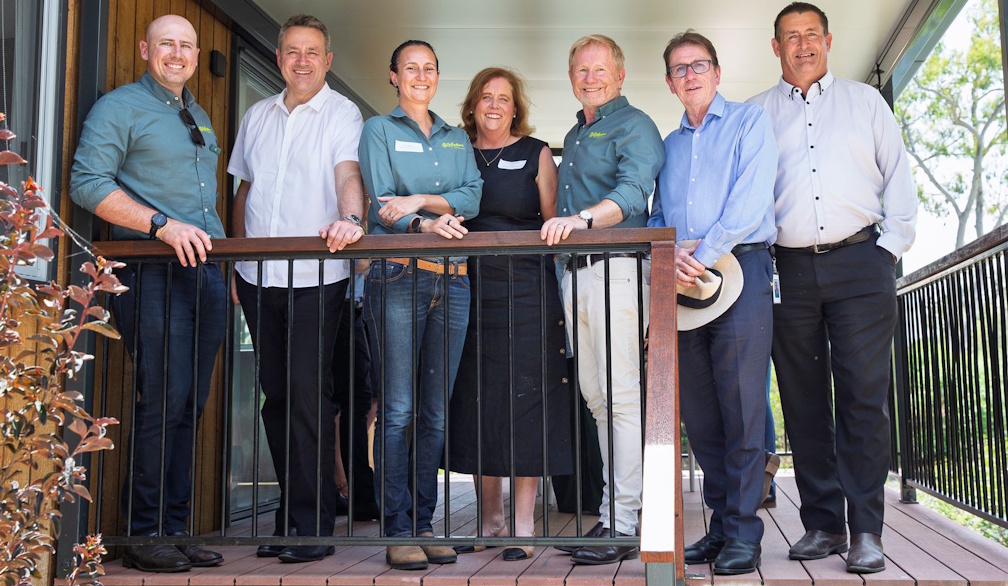7 graphs that show economic growth near zero as Australia waits for a budget boost
- Written by John Hawkins, Senior Lecturer, Canberra School of Politics, Economics and Society, University of Canberra
The Australian economy came close to a standstill[1] in the first three months of this year. March-quarter economic growth sank to just 0.1%, meaning that, when adjusted for inflation, there was hardly any more income, spending or production than the quarter before.
Treasurer Jim Chalmers said the figures “laid bare[2]” the weakness of the Australian economy, adding[3]:
All of these people who were advising us to cut much harder in the budget or to provide no cost-of-living relief to people, they have been proven to be dead wrong.
The government’s decision to spend more rather than cut further in the May budget had been proved to be “exactly right”.
Australia’s annual rate of economic growth – 1.1% – is the worst outside of the pandemic since the early 1990s “recession we had to have[4]”.
Reserve Bank forecasts released last month predict a gradual improvement without a recession.
The figures show Australia in the middle of a prolonged per-capita recession[5] with real gross domestic product per capita falling for the fifth quarter in a row.
This is the longest decline in this measure of living standards in 40 years – since the early 1980s.
Households tighten belts further
Households have continued to tighten their belts. Household spending per capita contracted for the fifth quarter in a row.
Adjusted for inflation, Australian households spent hardly any more on goods and services that weren’t essential than they did a year before.
But there was a jump of 0.3% in so-called discretionary expenditure in the March quarter. The Bureau of Statistics attributes this increase in part to sold-out concerts by Taylor Swift and Pink[6] and the formula 1 grand prix being held in the March quarter for the first time since 2019.
With household incomes, on average, no higher than before the pandemic, households have been saving less.
The proportion of income saved, the so-called household saving ratio, remains close to zero at 0.9%. During the COVID lockdowns the ratio peaked at 24%.
Over the longer term, income per person will reflect labour productivity, which the bureau defines as gross domestic product per hour worked.
It has fallen since early 2022 and has recovered only modestly in recent quarters. It is still no higher than it was before the pandemic.
The bureau reports that building of new homes, and renovations to existing homes, fell again in the quarter. The slump reflects weak household incomes, higher interest rates and increased building costs.
Low dwelling approvals[7] suggest home building will not recover for some time.
Businesses investing less
Business investment fell for the first time since the June quarter of 2020. A winding back of work on oil and gas projects drove down investment. One area of strength was equipment for data centres.
Exports grew by much less than imports[8]. Coal and iron ore exports slumped, as did cotton (on the back of low harvests) and education (in line with cuts to international student numbers).
Most types of imports climbed in the quarter, in particular fertilisers after an interruption to domestic supplies.
(Somewhat) better times from July
Consumer surveys[9], weak dwelling approvals[10] and weak retail trade[11] all suggest the June quarter is likely to be similarly weak.
There was a large build-up of inventories (unsold goods) in the March quarter. It is unlikely to have flowed from firms deliberately building up stocks in anticipation of a surge in demand. More likely it suggests disappointing sales, which could bring weaker production in the June quarter.
Things should get better in the September quarter (the three months from July) when every taxpayer receives a Stage 3 tax cut[12] and a range of other government supports. These include a $75[13]-per-quarter rebate on electricity bills and a 3.75%[14] wage increase for Australians on awards.
Whether Australians decide to save or spend these supports is an open question. A Westpac survey found consumers plan to save 80 cents in every dollar[15] in tax relief, which would be a weak response by historical standards.
No rate cuts yet
Inflation is falling back towards the Reserve Bank’s target zone.
But the bank’s governor, Michele Bullock, told a Senate committee on Wednesday morning the bank would nonetheless “not hesitate[16]” to lift rates again if inflation didn’t come down as quickly as expected.
In determining what was happening to inflation, the bank would try to “look through” things that are one-off and are going to be reversed. This means it won’t take full account of budget measures such as the electricity rebate whose downward effect on measured inflation will be reversed when they end.
She said the economy was “very weak[17]” and the best thing she could do to help households was to bring inflation down.
References
- ^ close to a standstill (www.abs.gov.au)
- ^ laid bare (www.youtube.com)
- ^ adding (www.youtube.com)
- ^ recession we had to have (www.smh.com.au)
- ^ per-capita recession (www.amp.com.au)
- ^ Taylor Swift and Pink (www.abs.gov.au)
- ^ dwelling approvals (www.abs.gov.au)
- ^ much less than imports (www.abs.gov.au)
- ^ Consumer surveys (www.westpac.com.au)
- ^ dwelling approvals (www.abs.gov.au)
- ^ retail trade (www.abs.gov.au)
- ^ Stage 3 tax cut (theconversation.com)
- ^ $75 (theconversation.com)
- ^ 3.75% (theconversation.com)
- ^ 80 cents in every dollar (www.westpaciq.com.au)
- ^ not hesitate (www.afr.com)
- ^ very weak (www.smh.com.au)
Authors: John Hawkins, Senior Lecturer, Canberra School of Politics, Economics and Society, University of Canberra











